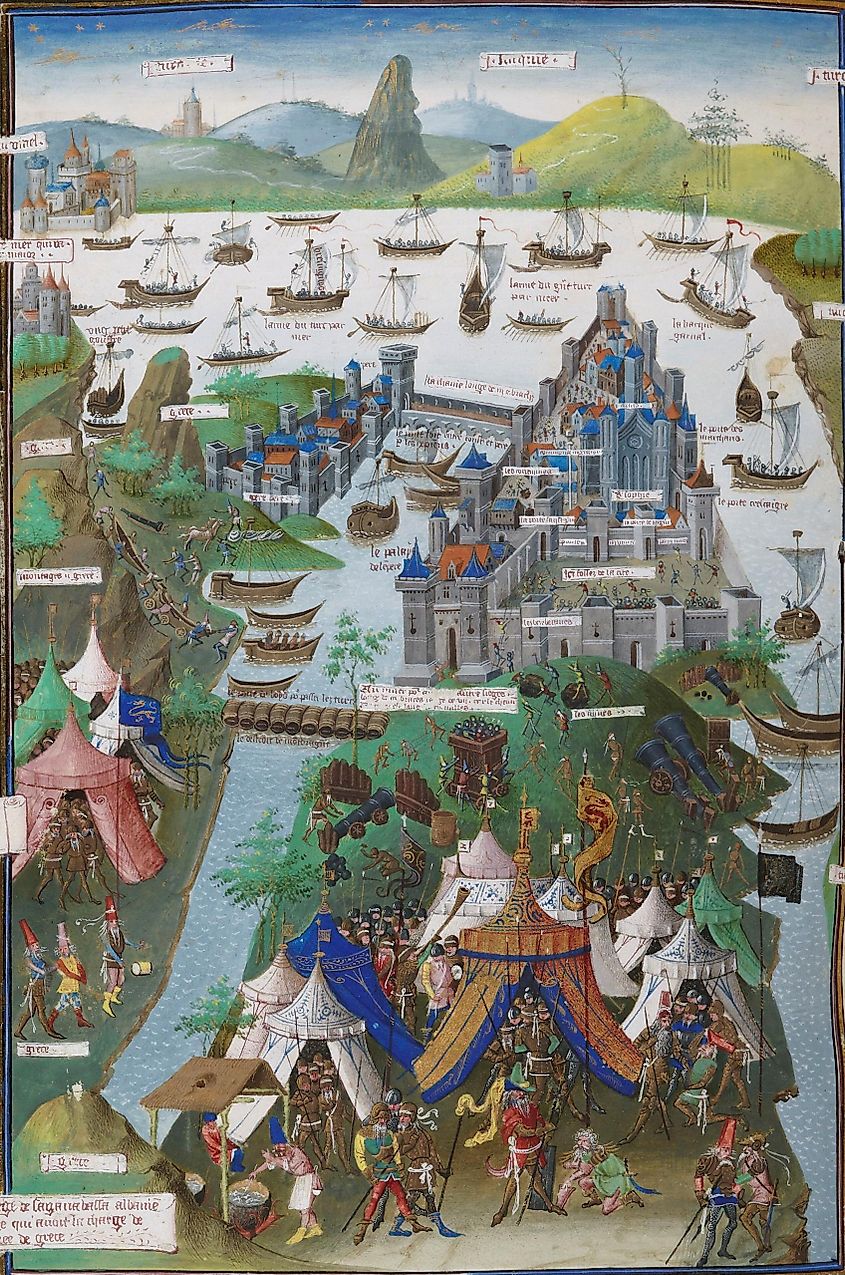
The Ottoman Empire emerged from humble beginnings in the late 13th century, eventually growing into one of the most powerful empires in history. Several key factors contributed to its rise, reflecting a combination of military prowess, strategic leadership, and socio-political organization.
Foundational Leadership and Military Expansion

The foundations of the Ottoman Empire can be traced back to Osman I, who established a small principality around 1299. His name, “Ottoman,” derives from “Uthman,” highlighting the significant role he played in the empire's inception. The Ottomans expanded their territories by defeating neighboring regions, particularly the Byzantine Empire, which was weakened by internal strife and external pressures. The conquest of Constantinople in 1453 by Mehmed II, also known as Mehmed the Conqueror, marked a pivotal moment, transforming the Ottoman state into a transcontinental empire with Istanbul as its new capital[1][4][9].
Early military successes were essential in establishing the Ottomans as a formidable power. Ottoman troops first invaded Europe in the mid-14th century, and their military innovations, such as the use of advanced artillery, facilitated conquests. Notably, the Ottomans were among the first to use cannons effectively in warfare, which played a crucial role in the successful siege of Constantinople[2][3][8].
Strategic Governance and Administrative Structures
The ability of the Ottomans to maintain and expand their control was significantly aided by their administrative structures. The empire adopted the millet system, which allowed various religious communities, including Christians and Jews, to govern themselves under their own laws, thus promoting stability and cooperation among diverse populations[1][3][7]. This system not only ensured relative autonomy for non-Muslims but also facilitated the integration of conquered peoples into the empire.
Moreover, the establishment of the Janissaries, an elite military unit mainly composed of Christian boys taken from their families through the devshirme system, contributed to the Ottomans' military strength. These soldiers were well-trained and loyal to the Sultan, providing a professional backbone for the empire's military efforts[2][6][9]. As the empire grew, the centralized bureaucracy evolved to manage its vast territories effectively, learning from the organizational techniques of the Byzantine Empire and the earlier Seljuks[7][8].
Economic Strength and Cultural Flourishing

Economically, the Ottoman Empire thrived by controlling critical trade routes that connected Europe, Asia, and Africa. Its strategic position enabled it to become a major center for international trade, enhancing its wealth and influence[6][9]. Cities like Istanbul flourished as economic hubs, attracting merchants and fostering vibrant commercial activities[1][5].
Culturally, the Ottoman Empire was a melting pot that showcased a blend of artistic and intellectual traditions. The period marked by Suleiman the Magnificent (1520-1566) is often referred to as the empire's golden age, characterized by significant advancements in architecture, literature, and the arts. The Ottomans built iconic structures, such as the Süleymaniye Mosque and Topkapi Palace, exemplifying their architectural innovation[3][9]. The empire also emphasized education and scholarship, establishing institutions that contributed to advancements in various fields, from mathematics to philosophy[9].
Diplomatic Alliances and Rivalries

The rise of the Ottoman Empire was also tied to its diplomatic savvy and ability to navigate complex relationships with neighboring states and rival powers. The Ottomans initially positioned themselves as protectors of Islam, which included defeating rivals like the Mamluks in Egypt and claiming regions that included the holy cities of Mecca and Medina. This expanded the empire's influence in the Islamic world and established the Sultan as a caliph, or leader of the Islamic community[1][8][9].
The empire's expansion often involved strategic alliances and marriages that solidified its power. However, it also faced significant challenges, such as the defeat at the Battle of Vienna in 1683, which marked the beginning of a gradual decline. Despite this, the initial conquests and governance led to the integration of vast territories, setting the foundation for the Ottoman Empire's expansive reach throughout Europe, the Middle East, and North Africa[4][5][8].
Conclusion
The rise of the Ottoman Empire was a complex interplay of strong leadership, military innovation, effective governance, economic strength, and cultural flourishing. Established by Osman I and expanded through strategic conquests and administrative systems, the empire not only dominated its contemporaries but also established a legacy that influenced future generations. Its ability to adapt and integrate diverse cultures facilitated a period of stability and prosperity, marking it as one of the most significant empires in history.
Get more accurate answers with Super Search, upload files, personalized discovery feed, save searches and contribute to the PandiPedia.
Let's look at alternatives:
- Modify the query.
- Start a new thread.
- Remove sources (if manually added).
- Request a manual search from our human research team.